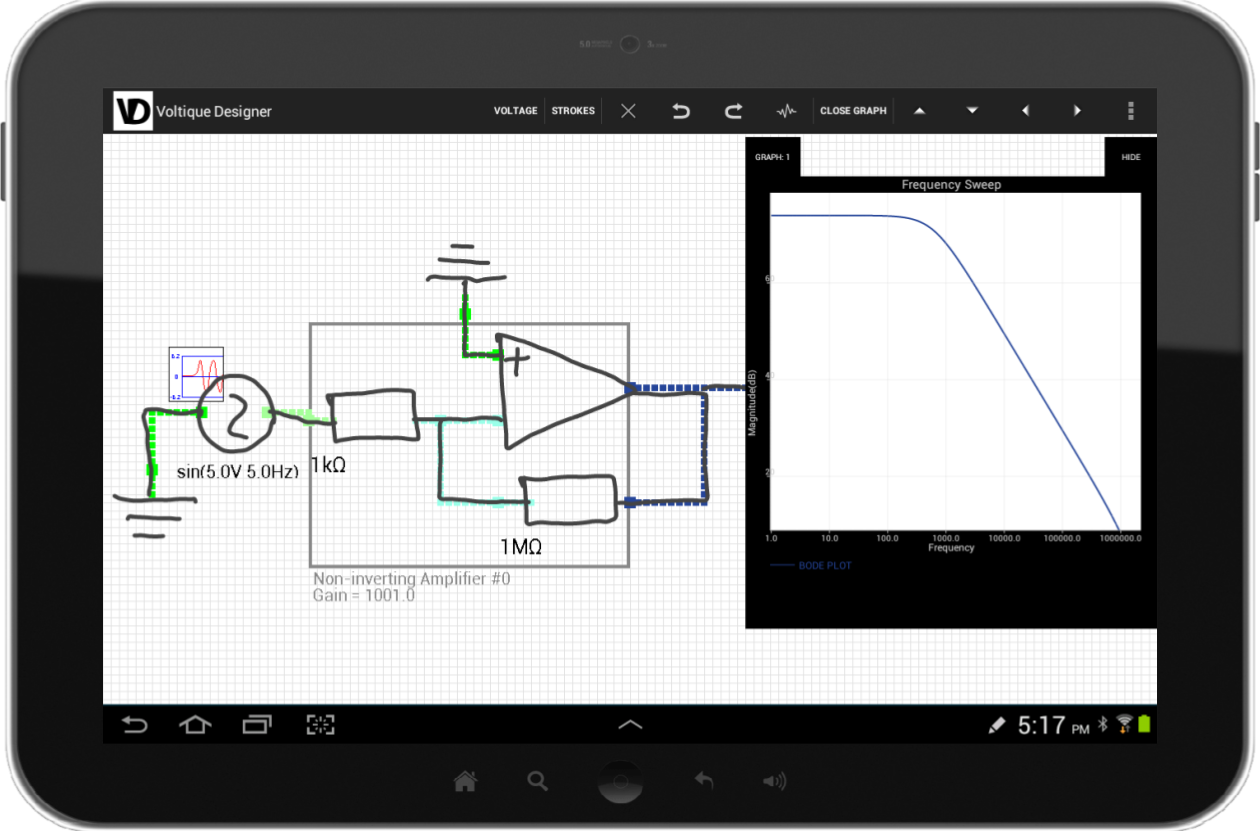Voltique and Montique Applications
How can modern software and tablets improve the process of electrical design? Our consideration of this question has led us to develop Voltique and Montique. Both applications bring activities still commonly performed with a pen and paper into the digital age. This move allows a whole host of new features which allow easier and more efficient electrical design.
Voltique
Voltique is an electronic circuit sketching and simulation tool for Android tablets. Voltique merges two things: the simplicity and speed of paper based design, and the analytical power of computer based tools. This combination makes Voltique useful for both educational and professional purposes.
Features
- Multiple stroke component recognition for quickly sketching complex components.
- A feature detection system which identifies common circuit structures and errors such as amplifiers, schmitt triggers and short circuits.
- Calculates useful circuit values such as gains, thresholds and equivalent resistances.
- A simple touch interface for modifying components.
- An integrated SPICE engine that allows complex circuit analysis.
Contributors
- Michelle Hy
- Simar Kalra
- Jack Moran
- Nicky Penhall
- David Xu
- David Yan
Montique
Montique is designed as a replacement for traditional engineering log books. As an electronic tool Montique is able to provide several features not available with a paper log book.
Chief among these is change tracking using the well known Git version control system. Because of this tracking the user is able to revert earlier mistakes and inspect when and by whom content was added. Richly formatted log pages are easy to produce in Montique with its integrated Markdown renderer, embeddable sketches and integration with Voltique Designer.
In addition Montique provides all the features expected of a modern note taking application. The user is able to tag, search and organise their log book pages allowing for an efficient workflow.
Special thanks to Dr. Oliver Sinnen for his guidance with these projects



